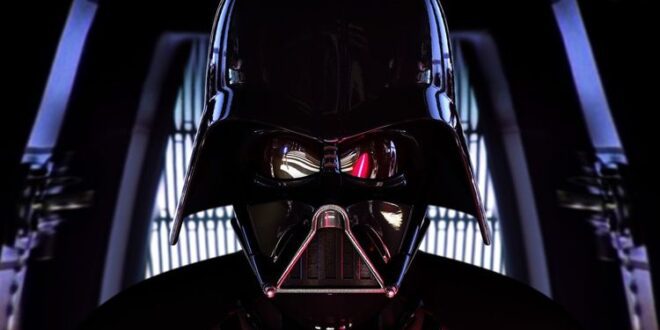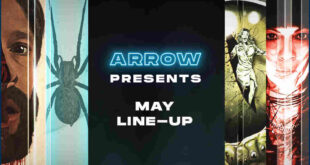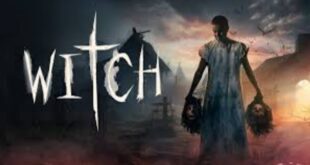It’s been said that you can judge the quality of a story by its villain. Well, ladies and gentlemen, let’s talk about the Star Wars universe and the man who made the dark side look so relatable. Darth Vader, the Sith Lord extraordinaire, is, without a shadow of a doubt, the most captivating villain in the cinematic universe. He’s a character that transcends the screen, and beneath that menacing helmet, he embodies the very essence of the duality of human nature.

I. The Rise of Darth Vader
Darth Vader, a name synonymous with power and malevolence, began life as the promising Jedi Knight Anakin Skywalker. From the moment we met him in Star Wars: Episode I – The Phantom Menace, his potential was undeniable. But oh, how the path to darkness is often paved with the best intentions. Anakin’s journey from a child slave on Tatooine to a Jedi prodigy prophesied to bring balance to The Force as “the chosen one” is a captivating tale, marked by an undeniable charisma that hints at the tumultuous journey that lies ahead.

II. The Descent into Darkness
Anakin’s fall from grace is an exquisite dive into the abyss of the human soul. It’s not a sudden plummet; it’s a gradual, heart-wrenching slide. Fear of loss, self-centered ambitions, and the seductive manipulations of false security installed by Emperor Palpatine – all played a part in his transformation. It’s a chilling reminder of how easy it is for the best of us to be swayed by our darker impulses and egocentric anxieties to a self-sabotaging demise.
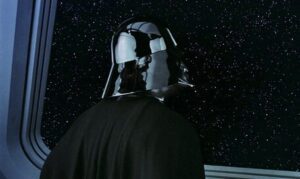
III. The Power of Redemption
But here’s the kicker: Darth Vader’s story isn’t just a tale of villainy. No, it’s a tale of the potential for redemption. Even after committing unspeakable atrocities – the murder of countless Jedi (never forget the younglings), and oh yeah-the annihilation of Alderaan – a sliver of the man he used to be, remained. It’s this sliver that his son, Luke Skywalker, saw and believed in. The final showdown between Luke and Vader in Return of the Jedi is a cinematic moment for the ages, a testament to the enduring struggle between good and evil, and the ever-present glimmer of hope – no matter how far down we have gone, exists even in the darkest of hearts.

IV. The Tragic Hero
Darth Vader is the quintessential tragic hero. He’s like the heroes of ancient Greek tragedies – a character of great nobility brought down by a tragic flaw. In his case, that flaw is unchecked love and fear. It’s what makes him so relatable. We can understand his struggles and mourn his choices, even if we can’t condone them. He is the epitome of the “potential” child, who becomes lost and wanders in the dark in every wrong direction.
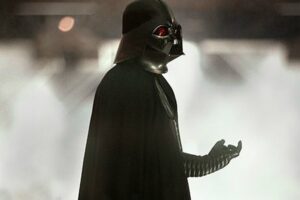
V. The Iconic Mask and Voice
That iconic black mask accompanied by the voice of royalty and the national treasure that is James Earl Jones! They aren’t just cool aesthetics; they’re integral to the character. The mask is a metaphor for the emotional and physical barriers Vader has erected to conceal his true self. And that mechanical voice? It’s a constant reminder of his transformation into a dark side enforcer. These elements add depth and complexity to his character.
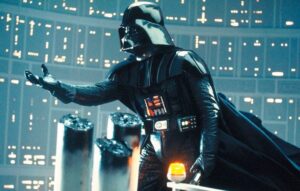
VI. The Impact on Pop Culture
Darth Vader isn’t just a character; he’s a cultural icon. His image, his breath, and that voice have become symbols of villainy, recognizable to people who’ve never even seen a Star Wars movie. He’s inspired parodies, imitations, and references across media. That’s the sign of a truly well-crafted, multi-dimensional villain.
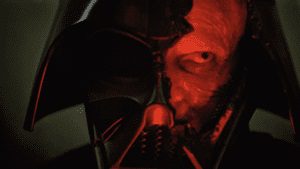
VII. The Duality of Man
Darth Vader embodies the duality of human nature, a theme that has captivated artists and philosophers throughout history. His transformation into the dark side mirrors the internal struggle between good and evil that every one of us faces. It’s a battle that defines the human experience.
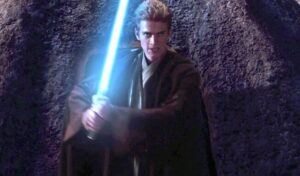
VIII. The Universal Appeal
Why does Darth Vader resonate with people worldwide? It’s because the duality of man is a universal theme. We all wrestle with the balance between our light and dark sides. Anakin’s journey serves as a stark reminder of this struggle, making him an instantly relatable character. Vader is the strange case of Dr. Jekyll and Mr. Hyde.
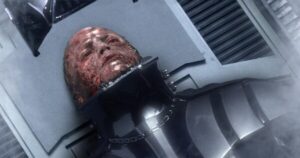
IX. The Legacy of Darth Vader
Darth Vader’s legacy extends far beyond the Star Wars universe. He’s a character that invites in-depth discussions about the nature of villainy and the possibility of redemption. Whether in academic circles, film studies, or philosophical debates, Darth Vader continues to be a source of fascination and analysis, ensuring his place in the pantheon of iconic figures in pop culture.

X. Conclusion
In a galaxy far, far away, Darth Vader reigns supreme as the ultimate cinematic villain. His journey from light to dark, and the redemption that follows, has enraptured audiences for generations. His influence on pop culture is immeasurable, and his story speaks to the very essence of the human condition – the constant battle between the forces of good and evil. Through Darth Vader, we learn that even in the darkest of times, redemption is not a lost hope; it’s a beacon of light that can guide even the most fallen souls back to the path of righteousness.
“Do not go gentle into that good night.
Rage, rage against the dying of the light.” ~Dylan Thomas
 PopHorror Let's Get Scared
PopHorror Let's Get Scared
